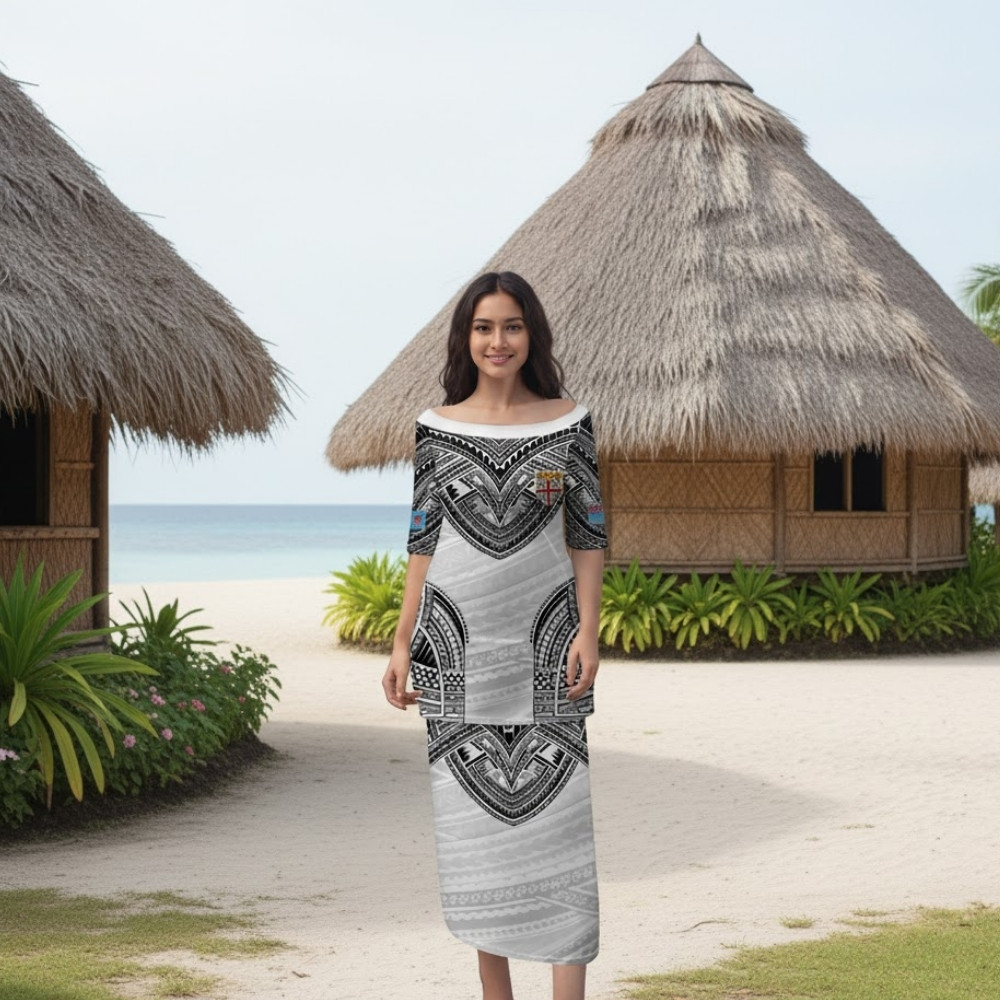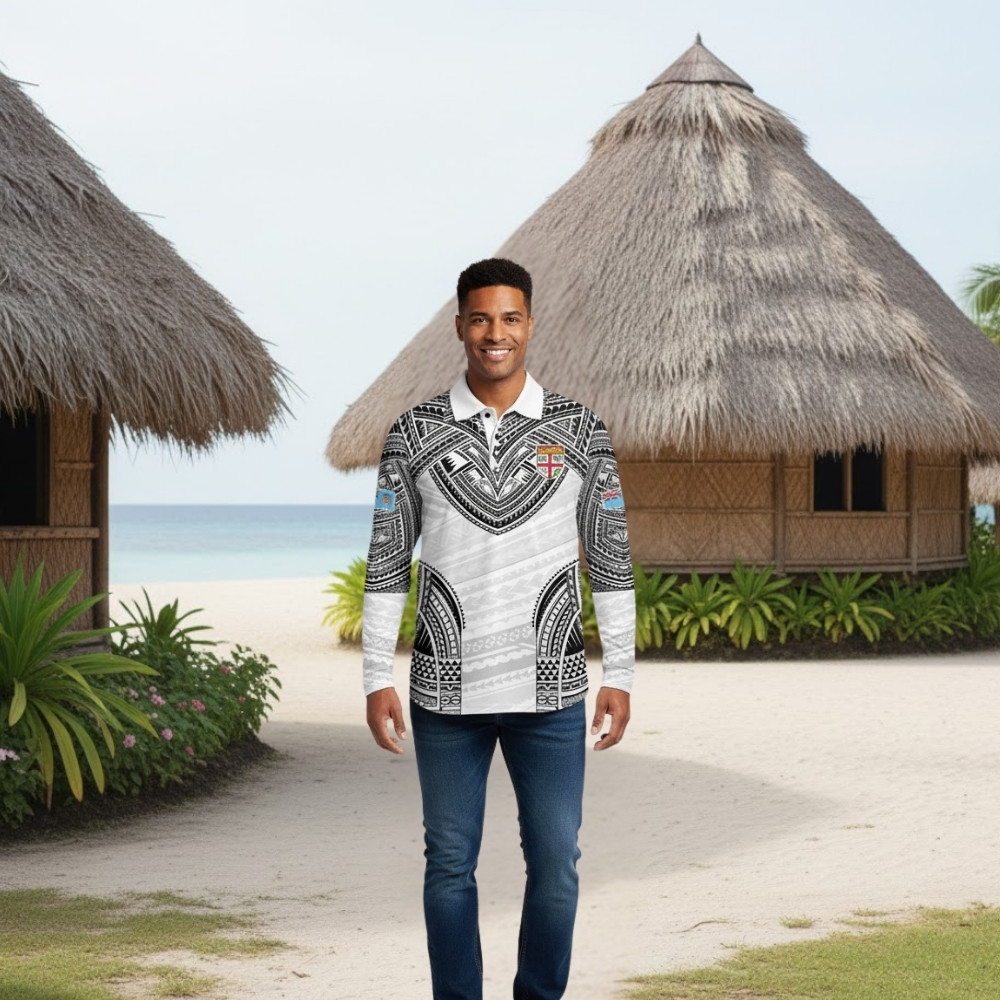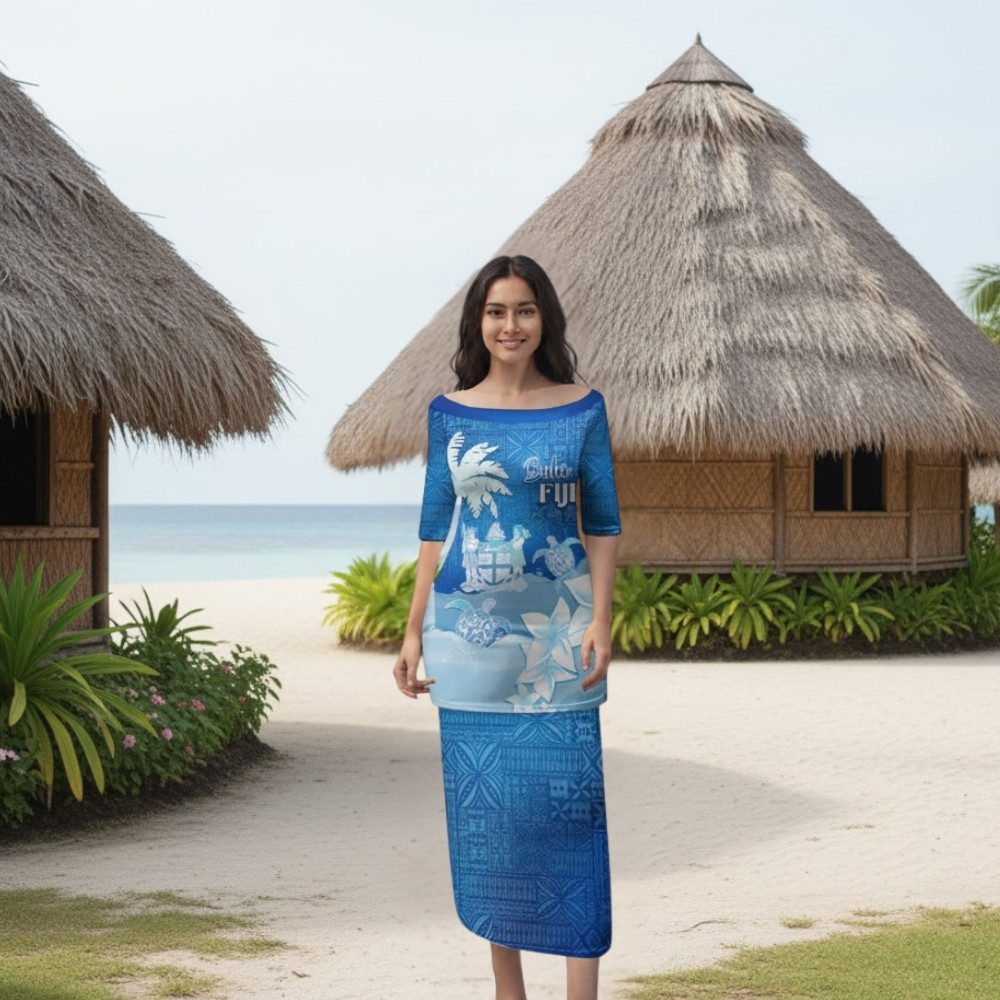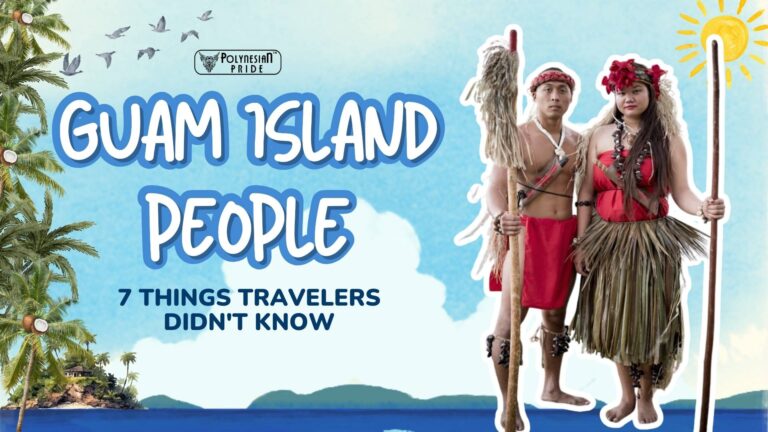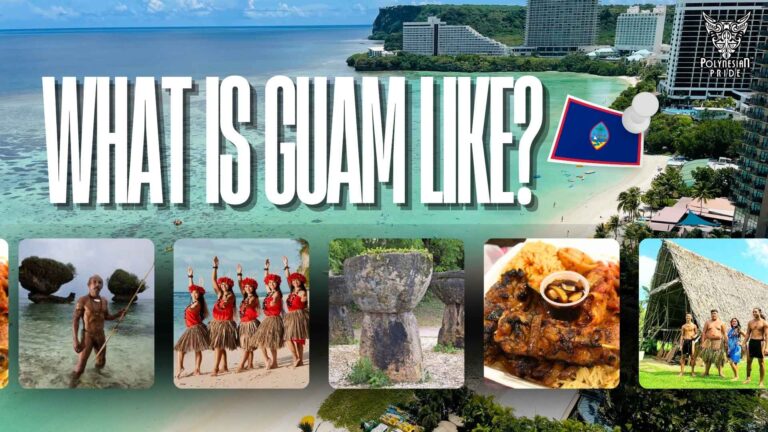Explore Fiji Culture Village: Tradition Comes Alive
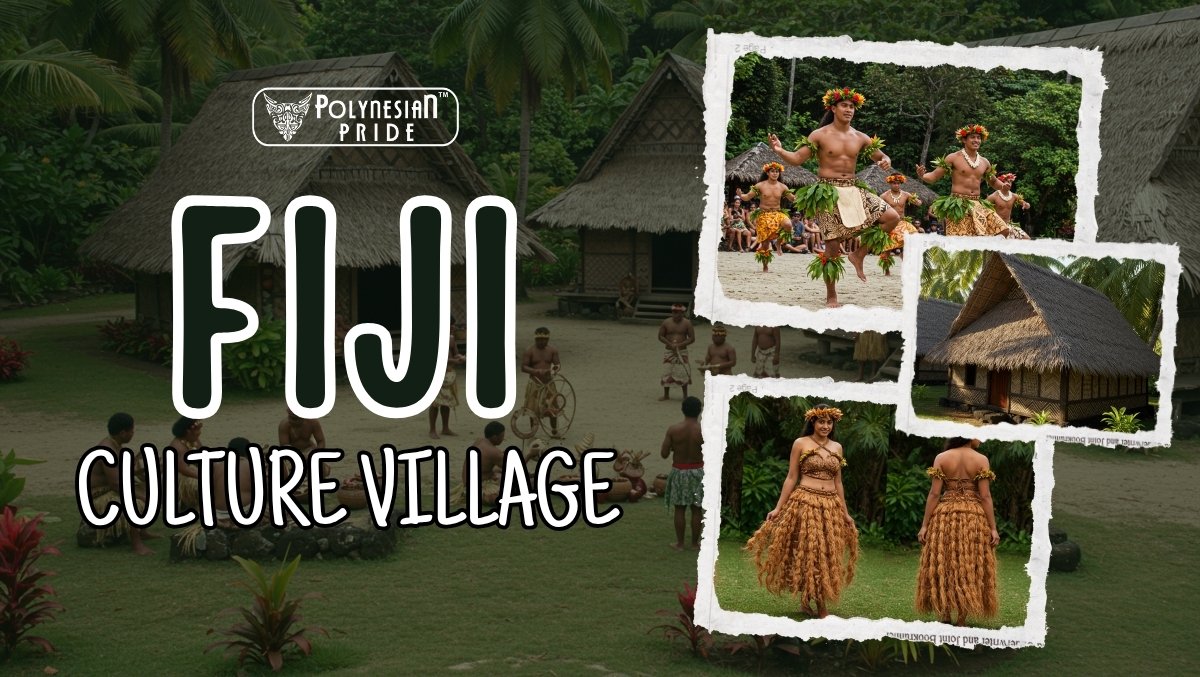
The Fiji Culture Village offers travelers a vivid journey into ancestral customs, daily life, and island heritage. Curious about what happens during a Kava ceremony in Fiji or the famous fire-walking ritual? This cultural site in Nadi brings it all to life through performances, interactions, and living traditions.
This guide will walk you through performances, cooking demonstrations, handicrafts, cultural customs, and essential tips for visiting the Fiji Culture Village.
Overview of Fiji Culture Village
The Fiji Culture Village was developed as a dedicated venue to preserve and showcase Indigenous Fijian traditions for locals and international visitors. Unlike residential villages, this site was carefully designed to reflect authentic Fijian life through architecture, rituals, and hands-on cultural experiences.
Background, Location, and Cultural Setting
The Fiji Culture Village offers visitors a well-curated introduction to Fiji’s heritage. Its design reflects authentic traditions while remaining easy to access for modern travelers.
- Geographic Location: Found in Nadi on the western coast of Viti Levu, Fiji’s main island, the site is just minutes from Nadi International Airport and popular resorts on Denarau Island.
- Regional Context: The village sits within Ba Province in the Western Division, a hub where traditional Fijian culture meets the country’s leading tourism economy.
- Foundation and Mission: Established in 2012, the project was created to preserve endangered customs and to provide both locals and tourists with a hands-on cultural education.
The site brings together artisans, dancers, and cultural educators from across Fiji, acting as a living classroom where traditions are practiced and shared for future generations. This makes it a top choice for Nadi cultural experiences, a true Fiji village experience, and a highlight in Viti Levu tourism.
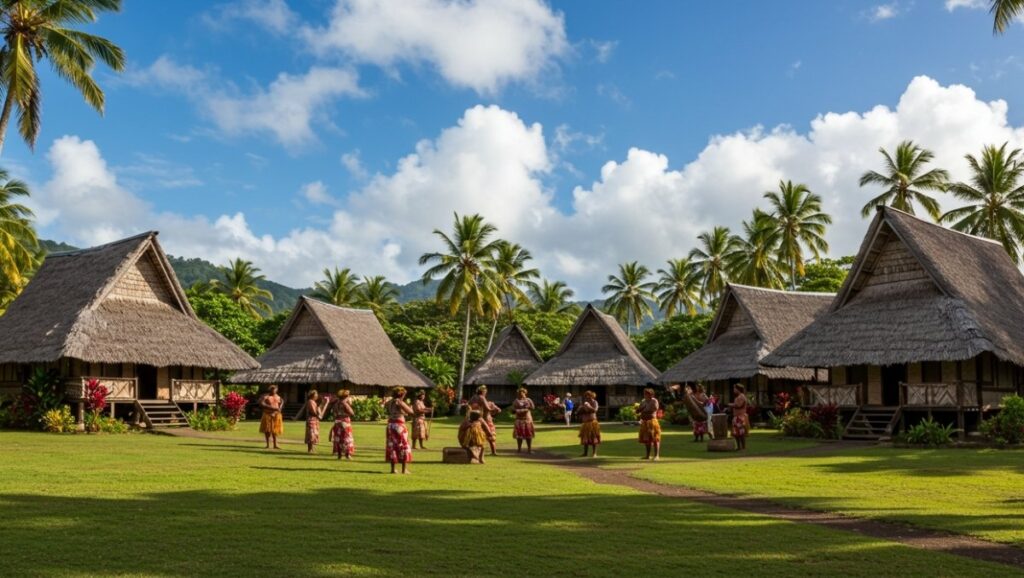
Why the Fiji Culture Village Stands Out?
The Fiji Culture Village goes beyond staged entertainment by preserving real traditions and involving the people who carry them.
- Preservation of Indigenous Fijian Culture: The village safeguards ceremonies, storytelling, meke dance, fire-walking, and traditional crafts that might otherwise be lost. Cultural practitioners from different provinces ensure each activity is shown with authenticity.
- Direct Interaction with Artisans, Dancers, and Clan Figures: Visitors engage directly with chiefs, dancers, artisans, storytellers, and community leaders, learning about Fijian chief traditions and gaining hands-on insights into how ancestral roles shape daily village life.
- A Blend of Traditional Arts, Cuisine, and Architecture: Traditional cooking, performances, and architecture work together to create an immersive experience. Guests can step inside bure houses, watch cooking demonstrations, and taste food prepared in a lovo earth oven — all of which reflect real Fijian village life.
In essence, the Fiji Culture Village is a living cultural environment — where traditions are practiced, preserved, and shared, not just displayed.
Signature Cultural Experiences at Fijian Traditional Villages
Visitors don’t just observe culture here — they step into it.
1. What Are the Main Performances and Ceremonies?
These activities represent the heartbeat of Fijian culture, combining ritual, history, and community identity. Each element connects modern visitors with practices that have been preserved through generations.
Meke Dance / Fijian dance performance
The Meke is one of the most recognizable symbols of Fijian culture, combining rhythmic chanting, drum beats, and expressive choreography. Dancers wear traditional masi or tapa garments adorned with shells, leaves, or body paint. Whether performed as a warrior dance or a ceremonial welcome, the Meke connects audiences with the storytelling, celebration, and spiritual expression of Fijian ancestors.
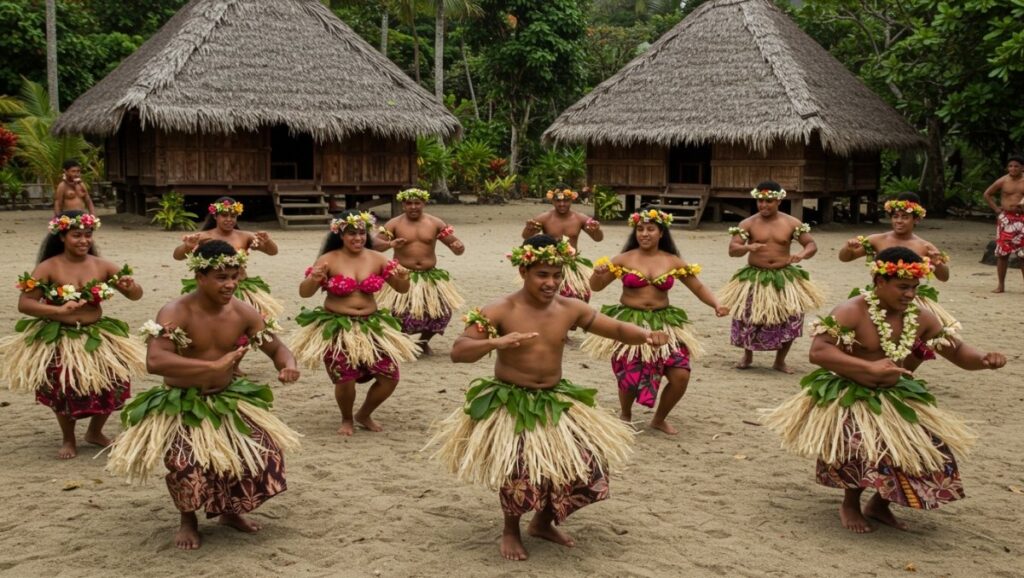
Fiji Fire Walking Ceremony
The Fire Walking Ceremony is one of the most striking traditions showcased in Fiji. Its origins are traced to the Sawau tribe of Beqa Island, where legend tells of a spiritual pact that granted the power to walk across heated stones without injury. Today, the ceremony is still treated with reverence, symbolizing faith, ancestral protection, and courage.
Kava Ceremony in Fiji
The Kava Ceremony holds deep social and ceremonial importance in Indigenous Fijian culture. Led by a chief or elder, the ritual involves preparing yaqona (kava root) by grinding and mixing it with water before it is served in a communal bowl. Each sip follows a respectful order that reflects hierarchy and tradition. Beyond its calming effects, the ceremony reinforces connection, unity, and protocol within the village structure.
Tribal storytelling & oral heritage
Storytelling has long preserved the identity and values of Indigenous Fijians. Through spoken legends, genealogies, and tales of ancestral heroes, communities pass down their history without written records.
At the Fiji Culture Village, visitors may hear myths about origin spirits, warriors, or natural forces that shaped island life. These narratives not only entertain but also teach moral lessons and reinforce collective memory across generations.
2. How Are Architecture, Daily Life, and Customs Showcased?
Beyond performances, the Fiji Culture Village reveals how Fijians live, build, and uphold their traditions through daily life and community customs.
Fijian architecture
Traditional Fijian architecture is best reflected in the bure, a thatched house made from wooden frames, woven panels, and palm or reed roofing. Communal spaces are arranged to reflect hierarchy and cooperation, giving visitors an authentic sense of how island communities once lived together under shared roofs and open gathering grounds.
Fijian customs and beliefs
Social etiquette in Indigenous Fijian communities places strong emphasis on respect for chiefs and elders. Visitors to the village often learn about protocol, such as removing hats, lowering posture, or presenting sevusevu during formal encounters. These traditions remain present in ceremonies, blessings, and cultural education shared with guests.
Island cultural activities
Daily life in traditional Fijian villages has long revolved around the sea, agriculture, and communal preparation for ceremonies or festivals. Activities such as fishing, harvesting root crops, crafting tools, or preparing lovo feasts reflect practical skills tied to survival and celebration.
3. How Can Visitors Engage with Handicrafts, Cuisine, and Activities?
Beyond the village grounds, cultural shows in Nadi and related tours expand the experience through partnered performances, offering travelers more opportunities to engage with living traditions and enjoy a full Nadi cultural experience.
Fijian handicrafts and arts
Traditional Fijian handicrafts are a core part of the cultural experience, with artisans demonstrating wood carving, tapa cloth making, and leaf weaving. Visitors can watch the crafting process up close and, in many cases, try simple techniques themselves under the guidance of local makers.
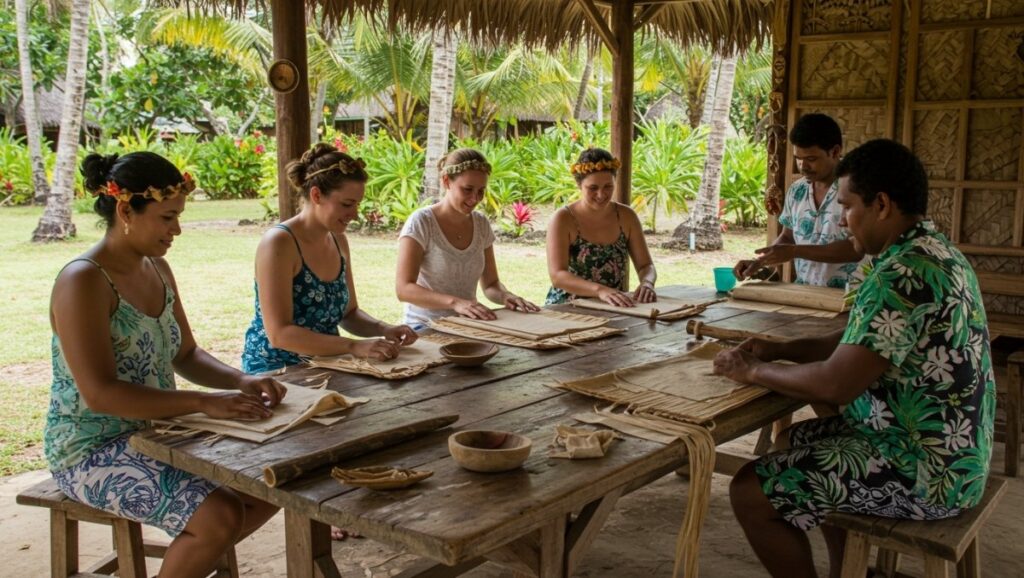
Fijian cooking demonstration
Food is presented as both tradition and storytelling at the Fiji culture village. Cooking sessions often feature the lovo earth oven, kokoda made with fresh seafood and coconut milk, and root crops like cassava and taro.
Cultural shows in Nadi
Beyond the village grounds, cultural shows in Nadi expand the experience through partnered tours and performances. These programs may include meke dance, kava preparation, and guided visits that connect the Fiji Culture Village with other heritage venues around Viti Levu. They offer travelers more opportunities to engage with living traditions outside a single location.
To help you quickly grasp what each cultural activity offers, the table below breaks down the main experiences and how visitors can take part.
| Experience Category | Key Activities | Cultural Significance | Visitor Interaction Level |
| Traditional Performances & Ceremonies | Meke dance, fire walking, kava ceremony, tribal storytelling | Preserves ancestral rituals, oral history, and performing arts | Medium to High – guests observe and may join select rituals |
| Architecture, Village Life & Customs | Bure houses, chiefly protocols, ancestral beliefs, and coastal living | Reflects social hierarchy, spiritual traditions, and communal island lifestyle | Low to Medium – mainly guided tours and cultural explanations |
| Handicrafts, Cuisine & Visitor Participation | Tapa-making, wood carving, weaving, lovo cooking, food demos | Sustains indigenous craftsmanship and culinary heritage | High – visitors can try crafting, taste dishes, or join workshops |
Indigenous Fijian Attire and Heritage Fashion
Traditional Fijian clothing is more than a visual identity — it is an expression of spirituality, social hierarchy, performance culture, and ancestral continuity.
Traditional Attire in Performances and Ceremonies
Fijian clothing used in cultural performances and rituals reflects both symbolism and craftsmanship. During Meke dance performances, dancers often wear skirts made from masi (tapa cloth), coconut fibers, and braided pandanus leaves. Their costumes may be decorated with shells, feathers, or woven patterns that signal clan identity or regional heritage.
In Kava ceremonies, chiefs and participants typically dress in traditional sulu (wrap skirts) paired with natural accessories. Ceremonial attire emphasizes respect, hierarchy, and ancestral customs — especially when the event honors tribal storytelling or village gatherings.
Common materials seen across performances and rituals include:
- Tapa cloth (masi): Barkcloth decorated with natural dyes
- Coconut fibers: Used for skirts, belts, and arm bands
- Pandanus or pineapple leaves: Twisted or woven into garments and mats
- Natural headpieces and jewelry: Crafted from shells, flowers, wood, and seeds
These garments don’t just serve aesthetics — they communicate social roles, spiritual meaning, and links to the indigenous Fijian lifestyle and beliefs.
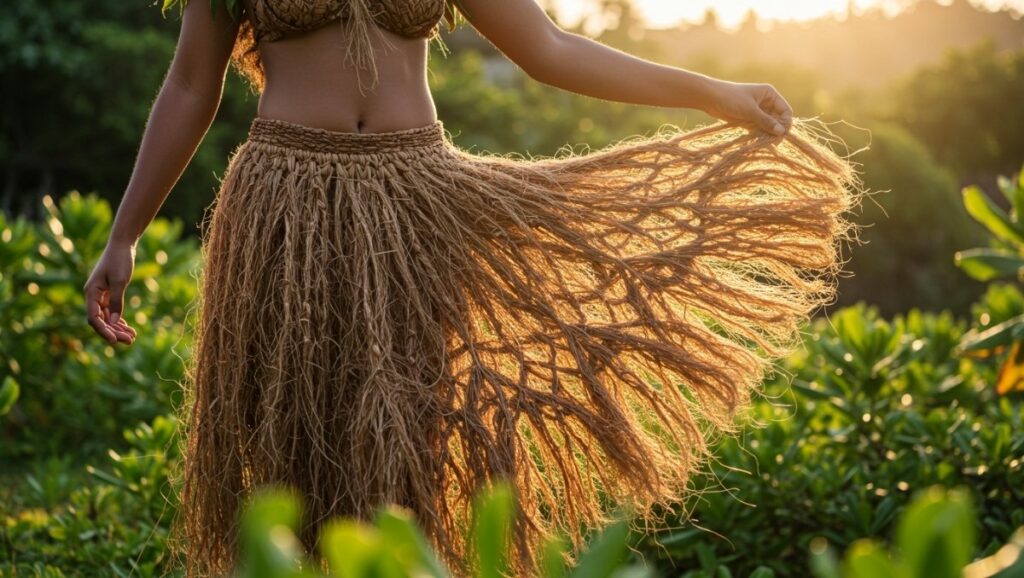
Modern Influence and Fashion Adaptation – Inspired by Fiji
Today, traditional Fijian attire inspires travel wear, event outfits, and island-style fashion. Visitors drawn to Fiji heritage tourism often look for clothing that blends comfort with cultural charm. Modern interpretations may include:
- Resort and travel outfits inspired by meke dance silhouettes
- Accessories influenced by tapa prints and coconut-fiber weaving
- Island-style garments for cultural shows in Nadi or village tours
Discover Fiji-inspired designs to elevate your style or cultural experience — explore options that capture the spirit of the islands!
Tips for Visitors: Dress Smart, Join In, and Enjoy the Culture!
Want to make the most of your Fiji village experience? Follow these quick, friendly tips to enjoy every moment while respecting Fijian chief traditions:
What Should You Wear? Light, comfortable, and modest clothing works best. Bring a sulu or sarong to cover your knees during ceremonies and avoid overly revealing outfits. Natural fabrics like cotton or linen help you stay cool while blending in and honoring Fijian chief traditions.
When Is the Best Time to Watch Performances? Most Meke dance shows and cultural activities in Nadi take place in the late afternoon or early evening. Fire Walking ceremonies are usually held during cultural nights, festivals, or pre-booked tours — so it’s best to check the schedule in advance. The best time to visit Fiji for these cultural experiences is during the dry season (May to October), when outdoor activities and performances are more vibrant.
How Should You Behave in Cultural Settings? Remove your hat when entering a bureau or meeting a chief. Accept kava with both hands and say “Bula!” before drinking. Always ask before taking photos and avoid pointing your feet toward elders or ceremonial items.
Participating in rituals, cooking demonstrations, and performances allows you to fully enjoy a Fiji village experience while respecting Fijian chief traditions and local customs. A little respect, curiosity, and enthusiasm go a long way — and you’ll be welcomed with genuine Fijian hospitality!
Conclusion
A visit to the Fiji Culture Village isn’t just about watching performances — it’s about stepping into a living world of tradition, storytelling, and connection. From vibrant Meke dance performances and powerful Kava ceremonies to hands-on encounters with Fijian handicrafts and arts, the experience goes far beyond surface-level tourism. You get an authentic look at the Indigenous Fijian lifestyle, cultural customs, and village practices that have been passed down through generations.
If you’re planning a Fijian traditional village tour on Viti Levu, this is one of the best places to start. It’s warm, welcoming, and rich in knowledge — a space where heritage is performed, preserved, and shared with pride. One visit can leave you with stories, insights, and memories that last long after you leave. And who knows? You might even walk away with a deeper appreciation for the culture behind every dance step, fire-walking ritual, and handcrafted tapa cloth.
Bula spirit, real voices, and living history — that’s the Fiji Culture Village.
FAQs
What traditional activities are shown in the Fiji Culture Village?
Visitors can experience authentic Fijian traditions such as the Meke dance performance, Kava ceremony, fire walking, tribal storytelling, and Fijian cooking demonstrations. These activities showcase the daily life, customs, and artistry of Indigenous Fijians.
What is the best time to visit the Fiji Culture Village in Nadi?
The best time to visit is during Fiji’s dry season, from May to October, when the weather is sunny and pleasant for outdoor cultural shows and village tours.
Are meals or local food included in the Fiji Culture Village tour?
Yes, most tours include a Fijian cooking demonstration where visitors can sample freshly prepared local dishes made with traditional ingredients.
Can you buy handmade crafts at the Fiji Culture Village?
Absolutely — visitors can purchase Fijian handicrafts and arts such as wood carvings, woven mats, jewelry, and other locally made souvenirs directly from artisans in the village.

I am a cultural historian and editor with over 10 years of research into pre-contact Polynesian history, the Lapita migration, and oral traditions. Share the excitement of my latest publications.
My contact:
Email: [email protected]
Tel: +64 21 456 7890

